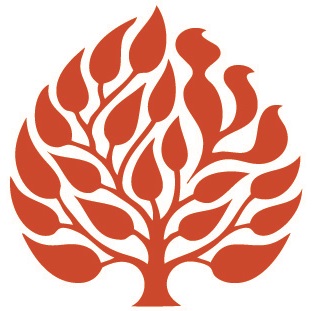The Women’s Section

A woman of valor–who can find her? In ancient Israel, the place one could not find her was in the Temple, except in a section called the ezrat nashim — literally, women’s territory. Only men served in the Temple as priests and Levites. This was partly a consequence of monotheism. In other ancient religions, with goddesses as well as gods, women would often control thetemples to goddesses.
Women did come to the Temple to offer sacrifices, but the instance in which a woman is specifically required to appear is when she’s in trouble: in the case of the Sotah. A Sotah, as described in the Book of Numbers (5:11 and following) is a woman whose husband suspects her of adultery but cannot prove it. She is required to appear at the Tabernacle (predecessor of the Temple in Jerusalem) to undergo a trial by ordeal to test her fidelity.
Although the Torah tell much of women’s presence in the Temple the Midrash does fill in. The Torah specifies that a large, copper–plated washbasin is to be built for the Tabernacle. (Exodus 30:18)According to a midrash, the copper plates were actually mirrors that had been brought by the Israelite women from Egypt and were used in the Tabernacle in order to commemorate the valiant deeds of those women. The background, as the midrash relates, is that husbands had separated from wives as the result of Pharoah’s oppression. Their wives used these mirrors to entice their menfolk back to them to ensure their fertility and thus the continuity of the Israelite nation.
This week’s parasha refers to women in an indirect but intriguing way. It contains the instructions for the setting up of the Tabernacle, which was portable, since the Israelites needed to carry it with them during their wanderings in the wilderness. The Tabernacle was contained within a tent,and the last verse of the parasha notes that all the pegs of the tent should be of copper (Exodus 27:19). Then, as now, pegs were needed to keep a tent from either blowing away or collapsing inward. A peg becomes an item of security and stability. This is the case in the metaphor used by Isaiah when speaking of the revival of Jerusalem:
When you gaze upon Zion, our city of assembly, your eyes shall Jerusalem as a secure homestead, a tent not to be transported, whose pegs shall never be pulled up (Isaiah 33:20)
Yet a peg, when pulled out of the ground, can be transformed from an innocent tool into a weapon. Last week’s haftarah was the Song of Deborah, a triumphal poem celebrating the victory of the Israelites over the Canaanites. Yael, the woman who kills the Canaanite general Sisera, is singled out for special praise, with due attention to the way she killed him: with a peg.
“Most blessed of women be Yael Smost blessed of women in tents / Her hand reached for the tent pin, her right hand for the workmen’s hammer/She struck Sisera, crushed his head, smashed and pierced his temple” (Judges 5:24;26)
This Biblical poem makes quite clear that Yael was able to kill Sisera because she had first seduced him. Similarly, another tale in the Book of Judges tells of another seductress, Delilah, who, in one of her many attempts to rob Samson of his strength, weaves his hair into a web and pegsit to the wall (Judges 16:14).
All these examples can be seen as an explanation for why ancient Judaism did not want women too–publicly present in the Temple : they were considered too seductive. Their seductive force would have to be safely contained in the plating of the washbasin, or domesticated in de–weaponized tent–pegs — or punished in the ritual of the Sotah. Modern Judaism, too, in some of its varieties, keeps women apart from men — in a section of synagogue called ezrat nashim, just as in the Temple. This, too, according to many explanations, is to prevent the men from becoming distracted.
The Temple in ancient Israel was essentially men’s territory. Because it was so central to the public expression of Judaism, women’s role in that public expression was, in consequence, limited. In the two thousand years since the destruction of the Temple — an era in which prayer and study replaced Temple ritual — women have also had a limited place in public Judaism. One of the features of today’s Judaism that makes it very different from that of the past is that in many communities — even some that consider themselves traditional — women are acting and not just observing. Women are acting as leaders of prayer and study. Women are being seen as themselves, not just as mirrored reflections. Women are bringing themselves in, not just being taken in.
The publication and distribution of “A Taste of Torah” commentary have been made possible by a generous gift from Sam and Marilee Susi.



